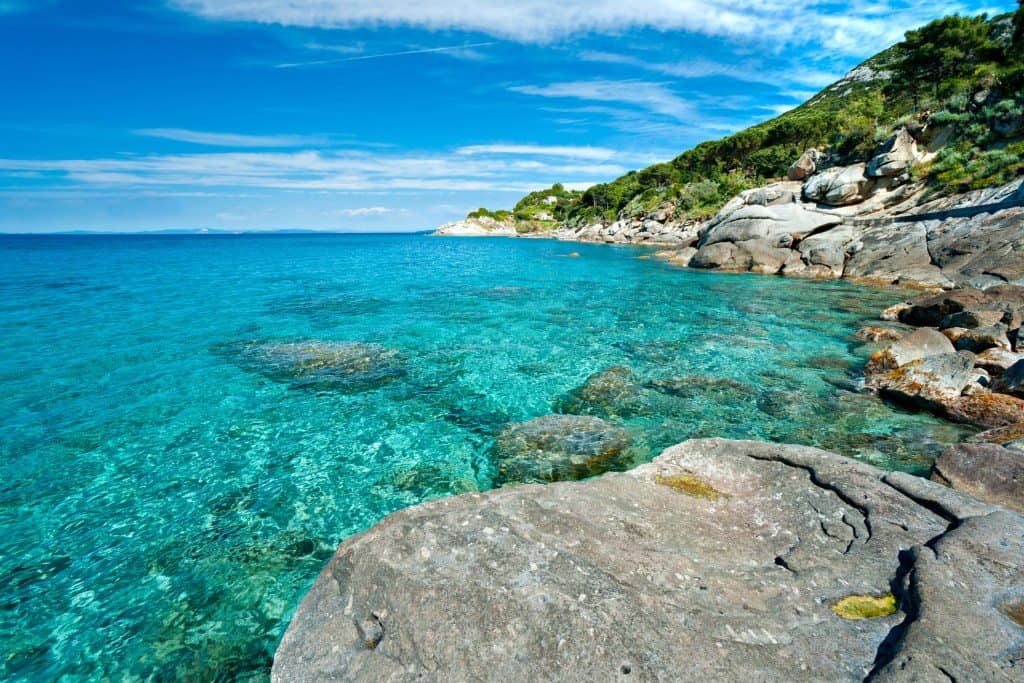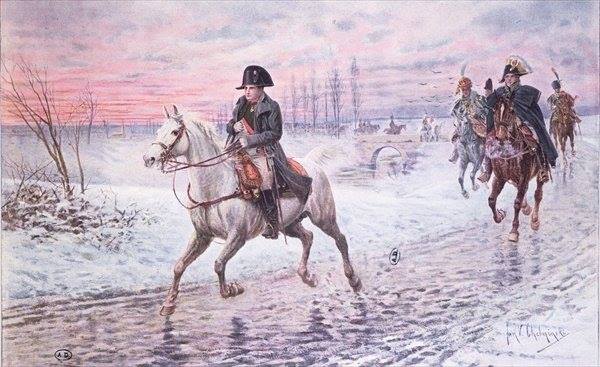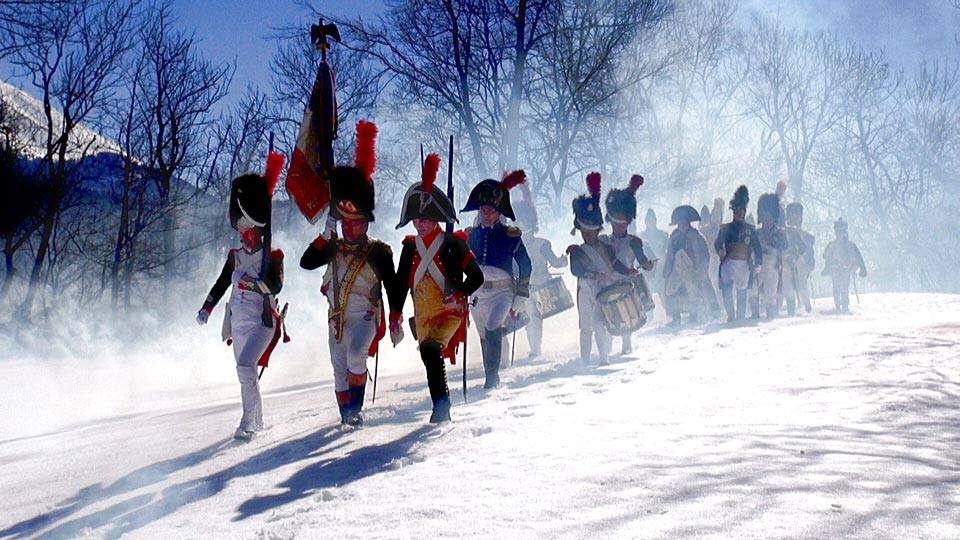Napoleon’s Route: A Historical Rundown
In this article will feature the Napoleon Route. About 200 years ago, this mythical road was once taken by that major figure of France’s history and his loyal soldiers. The route is 200 miles long; stretching from Golfe Juan (near Antibes on the edge of the Riviera) to Grenoble in the Alps. The Emperor and his men walked the length of it in only 6 days, despite dreadful conditions. They abided by his strongest wish, which was that not a single shot be fired, nor a single drop of blood spilled. We would like to share the story of this remarkable saga with you.
The Sovereign of Elba
During May of 1814, the course of France’s history was once more disrupted. Louis XVIII, brother of King Louis XVI, entered Paris. Napoleon was deposed and sentenced to exile on the island of Elba. He didn’t go alone, as several hundred of his loyal soldiers who formed the “Napoleon battalion” volunteered to follow him there. However, not all of his soldiers were granted permission to go with him.
He was greeted with a very warm welcome when he arrived in Portoferraio. The mayor even wanted to offer him the key of the city; however, since one didn’t actually exist, he gave him the key to his cellar instead, that he had especially gilded for the occasion. So this is how that island came to be governed by one of the greatest sovereigns in the world. During the ten months of his exile, Napoleon ruled the island masterfully, applying his well-honed skills to modernize it. Still, he was feeling a bit cramped. It wasn’t long before this “mandatory vacation” became a bore, and besides, his spies were coming back from France with news of trouble brewing. The problems facing Louis XVIII were only growing over time.
Those who had had to flee during the Revolution had returned and were demanding restitution for their lost property, mass lay-offs of 20,000 Imperial Guard soldiers, a ban of the tricolor flag, and also of the national anthem, the “Marseillaise”. These soldiers, who only knew how to wage war, were forced into early retirement and bitterly missed their Emperor. The French who were attached to the social benefits acquired after the Revolution were worried, and Napoleon understood it was his duty to return.

A Well-Kept Secret
Only a small circle of people knew of his comeback plan. It included his mother and his sister Pauline, both of whom met up with him on Elba, two of his loyal generals, Bertrand Drouot and Cambronne who had followed him into exile, his brother-in-law Joachim Murat, the King of Naples, who awaited his orders to take action, and Fleury de Chaboulon who attended the Council of State meetings and as such was in a position to keep Napoleon regularly informed of all events taking place in France.
On February 26, 1815, at nightfall, seven ships left the port in the utmost secrecy, during a ball given by the Emperor’s mother and Princess Pauline. The flotilla carried 1,100 men, about one hundred horses, arms, and a few cannons. Only Napoleon and his two generals knew what their final destination was. The others had been given sealed letters the day before, with orders to only open them the next day. There was an episode of frayed nerves when the flotilla crossed paths with a French warship.
Unsuspecting, the ship came closer to “The Inconstant” which carried Napoleon. The captain inquired about any news of the Emperor, and Napoleon himself took the megaphone to answer that “the emperor was, indeed, doing well”. The expedition then continued on its way without incident until it reached the area around Golfe Juan on Wednesday, March 1. The fishermen who witnessed the arrival couldn’t believe their eyes, the Emperor was back! One of them ran out into the water to guide the Emperor’s boat back to the land of France.
A Surprise Visit
Napoleon was aware of the problems King Louis XVIII was struggling with and knew that many Frenchmen were awaiting his return. Nevertheless, and despite a few circulating rumors, no one believed he would make a comeback, at least no one in Paris. So when in early March, news that Bonaparte had escaped from Elba reached the members of Congress, everyone was absolutely dumbfounded.
Speculation ran wild as to the deposed Emperor’s end motives. Where was he headed? Metternich, a member of the Assembly, got it right: “Gentlemen”, he declared, “Bonaparte has one objective and one only, Paris!” Where was he headed? Metternich, a member of the Assembly, got it right: “Gentlemen”, he declared, “Bonaparte has one objective and one only, Paris!” The audience panicked, although Napoleon was then still far away from the capital city. So on this first day of March, Napoleon landed on French soil, and once the witnesses’ initial shock wore off, he gave a solemn speech on the beach, to much acclaim.
He then settled down in the shade of an olive tree to devise his strategy. The goal was to reach Paris without firing a single shot. He needed the people to rally in his support, and take the king’s army by surprise. There were two ways he could go. He could head for Marseilles and then up towards Lyons, a longer but easier route or he could go through the mountains. The passage through the Alps would be a difficult one, but chances of encountering any of the king’s troops would be considerably slimmer.

To Paris on the Double
Before setting out on this long and dangerous march towards Paris, Napoleon wanted to win over the garrison based in the nearby fortress of Antibes. He thought it would be easy to gain their support, which could prove valuable since he could count on the backing of some powerful people. He sent his major over to fraternize with the garrison and deliver two letters. The first one was written by General Drouot and asked his friend, General Corsin, for a meeting, knowing that even though he was now at the king’s service, he still retained a deep respect for the Emperor.
The second was addressed to Colonel Paulin, the head of fortifications, by General Bertrand, his onetime superior. He remembered how the Colonel had cried the sad day of the Emperor’s abdication, less than a year earlier in Fontainebleau. If the garrison sided with the Emperor, he would be able to go the fast way, via Marseilles, which would no doubt send everyone in the Tuileries into a panic. Unfortunately, both men in question were out that day, and the four officers in charge of carrying out the delicate mission were arrested. Napoleon did not let this first setback deter him and decided to follow the mountain route.
A Valued Missionary
Napoleon entrusted Cambronne to scout ahead and find fresh supplies. Before his loyal general took off, he told him, “I don’t want my crown to cost a single drop of blood. Go! I am counting on your wisdom”. Cambronne mounted his horse and left without an escort; oblivious of the fact that he could very well make some bad encounters along the way. Sometimes, he didn’t receive the welcome he wished for. Nonetheless, his charisma and powers of persuasion did always get him the food rations he was seeking, even from the most dedicated royalists.
He wanted the people and the king to know that Napoleon was making a strong comeback, and so he bluffed to the Mayor of Cannes, claiming he needed 3,500 rations of bread and meat (for actually only 1,000 men), 12 four-horse-drawn carriages and several drivers and horses. The ruse worked so well that he eventually inflated that number to 5,000 when he called upon the mayor of Castellane, then 6,000, when he approached the mayor of Sisteron. He was so convincing and efficient that some impressed mayors refused any payment.
The Emperor had also ordered the general to keep anyone from passing along his designated route, so when the Prince Honoré de Monaco crossed his path on his way back from Paris, the general, taking Napoleon’s orders literally, had him arrested immediately. The poor man had to wait for Napoleon to arrive a few hours later to be freed. Aside from such occasional overzealousness, Cambronne accomplished his mission perfectly. It is no doubt, thanks to his efforts, that Napoleon was able to enter Grenoble a week later, to the cheering of the crowds.
A Mixed Welcome
News of a maritime expedition landing on the beaches of Golfe Juan was quick to reach the very wealthy city of Grasse. Some of the residents feared the return of pirates and fled to the mountains, having considerably suffered at their hands in the past. But as soon as they realized that it was the Emperor who was approaching, they relaxed; this pattern of behavior repeated all along his route.
Some storekeepers, either out of caution or opposition, chose to close their shops as the troops marched by. However, little by little, people came up to the Emperor to present a list of their grievances that he would listen to with interest and empathy. The royalist mayors did not want to meet with him and left their districts rather than stand in opposition to him, but overall, resistance was pretty weak. The mayor of Sisteron, loyal to the king, did urge his fellow-citizens to show their devotion to their country and to their king, but was faced with the virtual indifference of the people.
In Gap, the prefect had a proclamation printed to warn the local residents that “the man who had cost France and Europe so much blood and so many tears was coming to town”. But the inhabitants, aware of the peaceful conditions in which the Emperor was advancing, welcomed him with open arms, and the perfect thought it wise to skip town. Cambronne had indeed accomplished his mission beautifully, and Napoleon was able to enter and leave most cities and villages with people shouting, “Long live the Emperor!”
The Route through the Alps
A shrewd strategist, Napoleon knew he had little time to use the element of surprise to his advantage and foil any enemy army attempted attack. Therefore, he chose to follow the treacherous mountain roads. The long and dangerous path took him through St Vallier de Thiey, Seranon, Castellane, and Barrême. His men carried on their backs a kit that weighed almost 90 lbs and felt even heavier when it snowed and water accumulated on its cover. The expedition advanced with great difficulty and very little comfort. The one pair of regulation shoes these soldiers were issued were “generic” (no left foot, no right foot) and available in only three different sizes, so they used a straw to stuff any extra space in the extremities.
The ascent was so difficult and dangerous that at the Escragnoles pass a mule carrying some of the gold fell into a ravine. Legend has it that a few years later, a farmer, who had suddenly become very wealthy, opened a country inn, and no one knew where that money had come from. The men were exhausted, yet the Emperor only granted them a few short stops to sleep a bit, which also allowed those who had fallen behind to catch up with the group. In some places, the conditions were so awful that soldiers were reminded of the terrible Russian campaign.
An Invitation to Travel
The audacious gamble was not yet won. Napoleon and his “grognards” (or “grumblers”) covered almost 200 miles on foot in one week. He gave this name to his loyal soldiers in Poland, in 1807, because they were constantly complaining about the cold and their empty stomachs. There wasn’t more than a dozen miles left to reach their destination, Grenoble. When Cambronne informed the Emperor that the king’s army was waiting for him on the outskirts of Laffrey, a small village nearby, and that all his attempts at negotiation had failed. It was a serious situation.
Napoleon ordered his “grognards” to slip their weapons under their arms as a sign of their unwillingness to fight, and moved forward alone, announcing, “Soldiers, if there is one among you who wants to kill his Emperor, he may do so. Here I come!”. Anxiety set in after a moment of heightened emotion, but that was short-lived. All of a sudden, the men shouted in unison, “Long live the Emperor!” It was then no longer 1,000 but 2,000 men who continued on their way to Grenoble. Napoleon made a triumphant entrance to the cheering of the population there.
It’s a shame that urbanization has somewhat blurred the trails, but the road taken less than two centuries ago, with its treacherous paths, its torrents, and its wooden bridges, is no less interesting today. The journey offers hiking enthusiasts the promise of lovely walks, and for those less athletic who would rather travel the Napoleon Route by car, it offers lovely panoramas. Either way, the story behind the Napoleon Route is so beautiful, it is definitely worth the detour.
